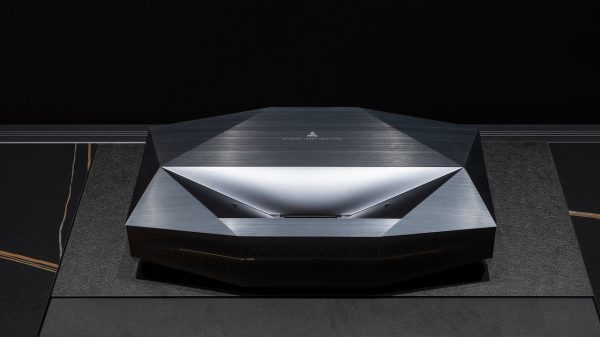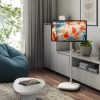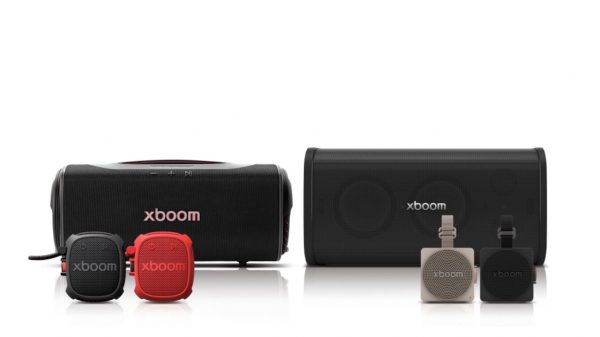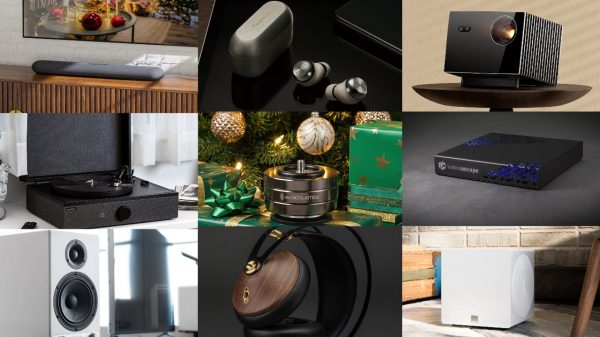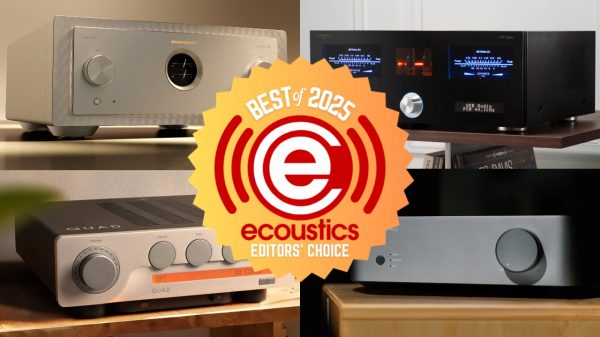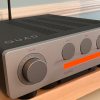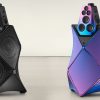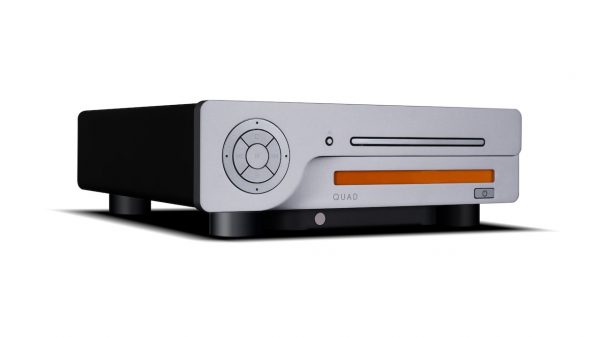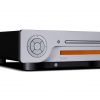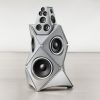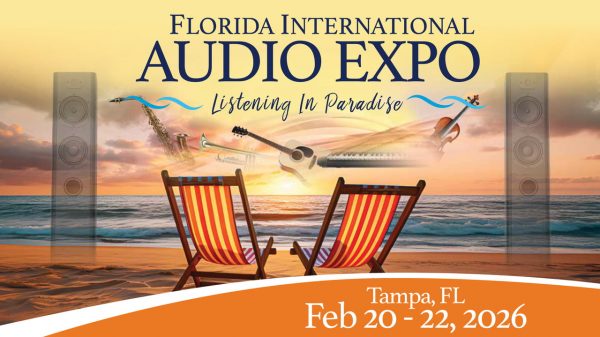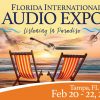When you bring up electrostatic loudspeakers in any serious audiophile circle, the usual suspects jump out faster than a misplaced stylus: MartinLogan, SoundLab, and Quad. That’s the holy trinity—especially for those of us who have spent decades chasing that impossibly fast, transparent, and holographic soundstage these panels can conjure when everything’s dialed in just right.
Unlike their headphone cousins—where electrostats are experiencing a genuine renaissance thanks to STAX, Audeze, Dan Clark Audio and others—full-size electrostatic loudspeakers haven’t exactly kept pace in the popularity department. Maybe it’s the price. Maybe it’s the reality check of dealing with speaker placement that requires a floor plan and a prayer. Or maybe it’s the kind of maintenance that makes owning a classic British sports car feel like child’s play.
Having personally owned five MartinLogan models dating back to the early ’90s—including the ones with those seductive curved panels and notorious appetite for quality amplification—I can tell you firsthand: when they’re good, they’re mind-blowing. But they’re also fussy, power-hungry, and completely intolerant of careless room setup. You don’t just “buy” electrostatics. You commit to them.
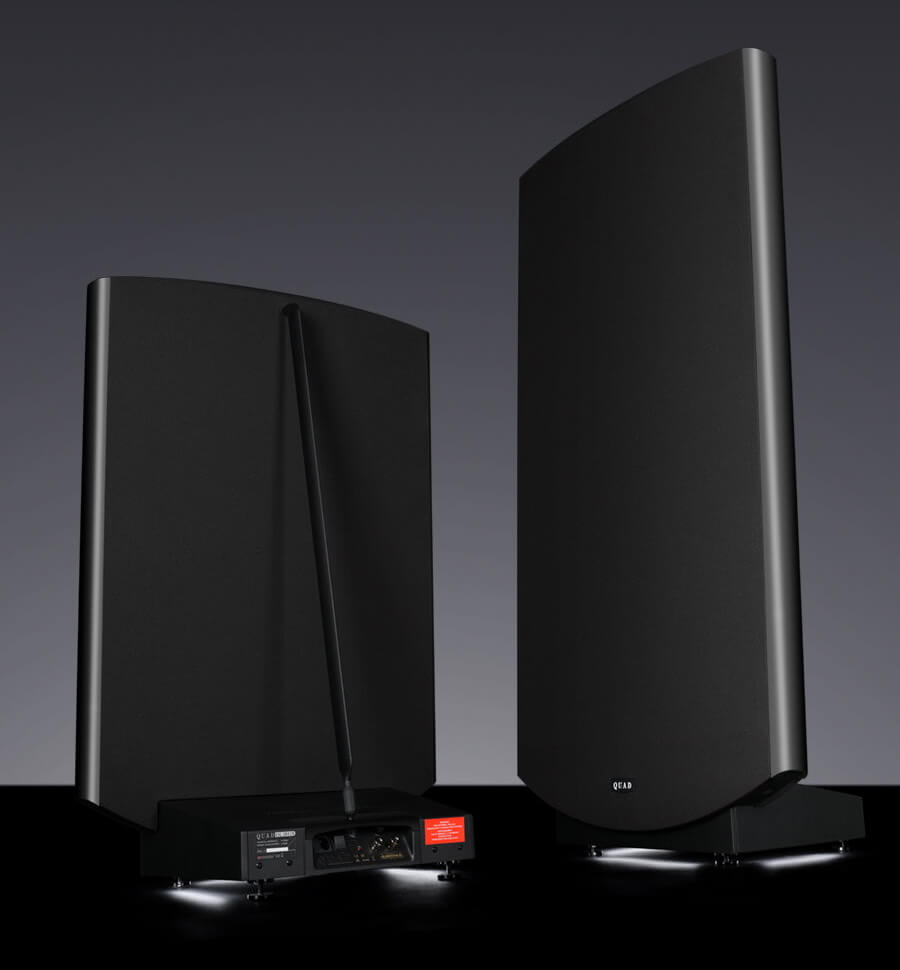
And now, Quad is reminding everyone why they helped write the book on this technology with the launch of their next-gen ESL 2812X and ESL 2912X.
These aren’t just minor tweaks or nostalgic retreads. They mark a full-on modernization of a design lineage that stretches all the way back to the iconic ESL-57 from 1957. While staying true to the electrostatic DNA that put Quad on the map, both new models bring a suite of substantial upgrades—and a new “stealth” aesthetic that trades classic British hi-fi formality for something a bit more minimalist and modern.
QUAD doesn’t rush things—especially when it comes to electrostatics. Since the launch of the original ESL back in 1957, the company has only released five generations of its legendary panel speakers. The first major update came in 1981 with the ESL-63, a model that still has a cult following and more than a few defenders ready to duel in the forums.
In 1999, QUAD introduced the ESL-988 and ESL-989, marking the first time the ESL line split into two different models. The 988 was closer in size and intent to the original designs, while the 989 added more panel area and extended low-end response for bigger rooms and bigger amps. That duo was replaced in 2006 by the ESL-2805 and ESL-2905, which refined the design and tightened up the aesthetics. In 2012, we got the ESL-2812 and ESL-2912, the models these new speakers finally replace.
So yes, it’s been 13 years—nearly an eternity in audio years—but if you know anything about electrostatics (and QUAD), you’ll know these things age like fine single malt. The ESL 2812X and 2912X aren’t just cosmetic refreshes. They’re the start of Generation Six, and they’ve arrived to remind everyone that QUAD still plays in this sandbox—and knows how to build castles in it.
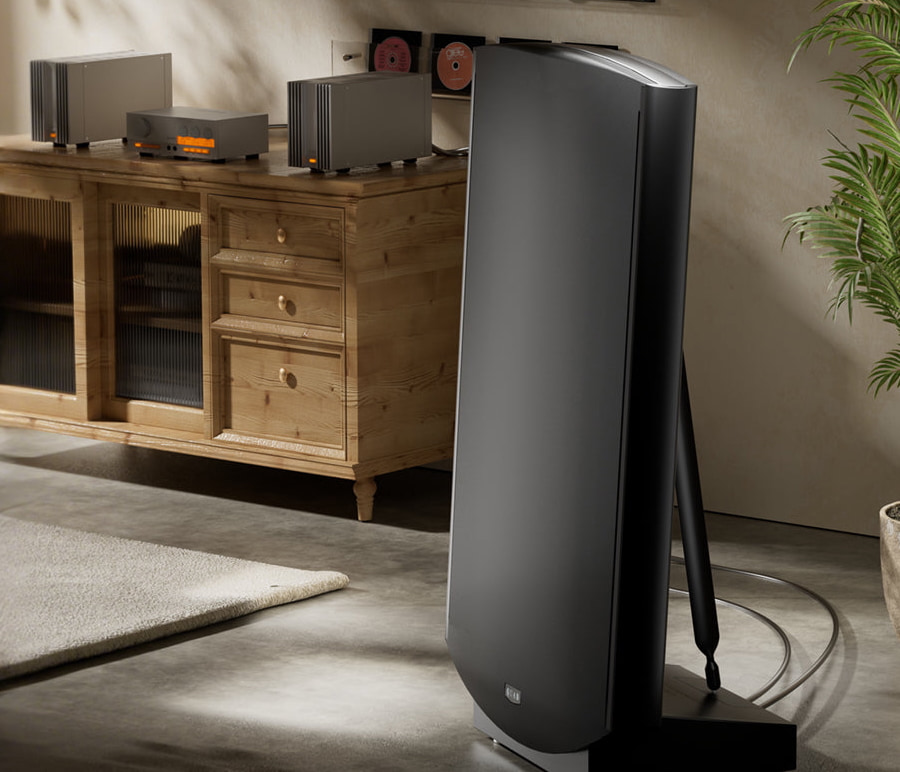
Quad ESL 2812X and ESL 2912X Aim to Redefine Electrostatic Speaker Performance in 2025
Quad isn’t just dusting off the cobwebs with the launch of the ESL 2812X and ESL 2912X—it’s rewriting the manual for how its iconic electrostatic loudspeakers should perform in 2025. And yes, they still look like giant space heaters from a Cold War-era Bond film, just with a stealthier all-black makeover that leans more “sophisticated villain lair” than “suburban audio dungeon.”
As you’d expect from proper electrostatics, there are no traditional cones or domes in sight. Instead, both models rely on ultra-thin, electrically charged diaphragms suspended in an electrostatic field. This classic setup moves air by fluctuating the charge with your music signal—a method that’s great for detail and imaging, but also famously demanding when it comes to room placement, power requirements, and patience.
Both the ESL 2812X and its taller sibling, the ESL 2912X, continue the brand’s legacy of concentric ring electrode design—essentially a way of delivering laser-focused stereo imaging that can make traditional dynamic drivers feel like blunt instruments. But Quad didn’t just slap on some paint and call it a day.
Internally, the new ESL X models split their electronics into three separate modules: a high-voltage multiplier, a control unit, and a low-voltage signal module. This modular approach is supposed to improve reliability and overall performance, especially during dynamic peaks—because let’s be real, electrostatics haven’t always been known for their slam or headroom.
Also getting a serious upgrade are the audio transformers, which now offer greater signal dynamics and detail retrieval. Translation? More texture, better snap, and hopefully fewer “where’s the bass?” conversations.
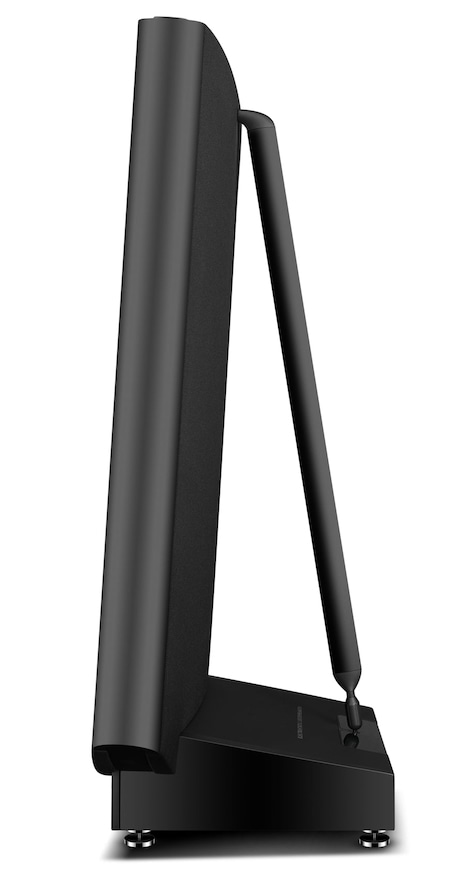
As for aesthetics, the new matte black, low-reflection finish makes these panels disappear more easily into modern interiors—assuming you’ve got the real estate. There are new grill cloths here as well; it’s a borderless industrial design that’s cleaner and more contemporary than past ESLs.
Size-wise, the ESL 2912X is the bigger brute, standing at 147cm tall versus the 2812X’s 107cm. It also adds six electrostatic panel elements to the smaller model’s four, extending the frequency range and scale of the presentation—ideal for larger listening rooms or those who prefer their Miles Davis with a bit more elbow room.
Peter Comeau, Quad’s Director of Acoustic Design, says the updated models aim to preserve everything great about ESLs while addressing the usual weaknesses—namely limited bass extension and dynamic restraint. The goal here is a true full-range experience with better transient response and authority.
Made in the U.K. (And Not Just for the Queen’s Ears, Baldrick)
The audio transformers are the unsung heroes in any electrostatic speaker, and Quad’s new ESL X models get an upgraded, UK-made set that actually matters. Overseen by Quad’s service guru Rob Flain and his quality control squad, these transformers are engineered to boost signal dynamics where it counts — the mids and highs — dialing up detail without turning things into a circus. The wide bandwidth keeps the frequency response flat all the way past 18kHz, which means you’re hearing everything, not just the parts they want you to hear.
Thanks to robust voltage regulation, these transformers kill off flux modulation artefacts that tend to pop up when you crank the volume. The payoff? Sharper transients, punchier mid/high dynamics, and a soundstage that suddenly has some depth instead of sounding like a cardboard box. The new finish plays it cool — no gimmicks, just solid engineering and clean simplicity. But for those who like a little flair, Quad tosses in a subtle LED Halo light under the speakers, which you can dim or turn off, making them look like they’re floating on a cloud. Because why not add a little magic when you can?
Quad ESL Comparison
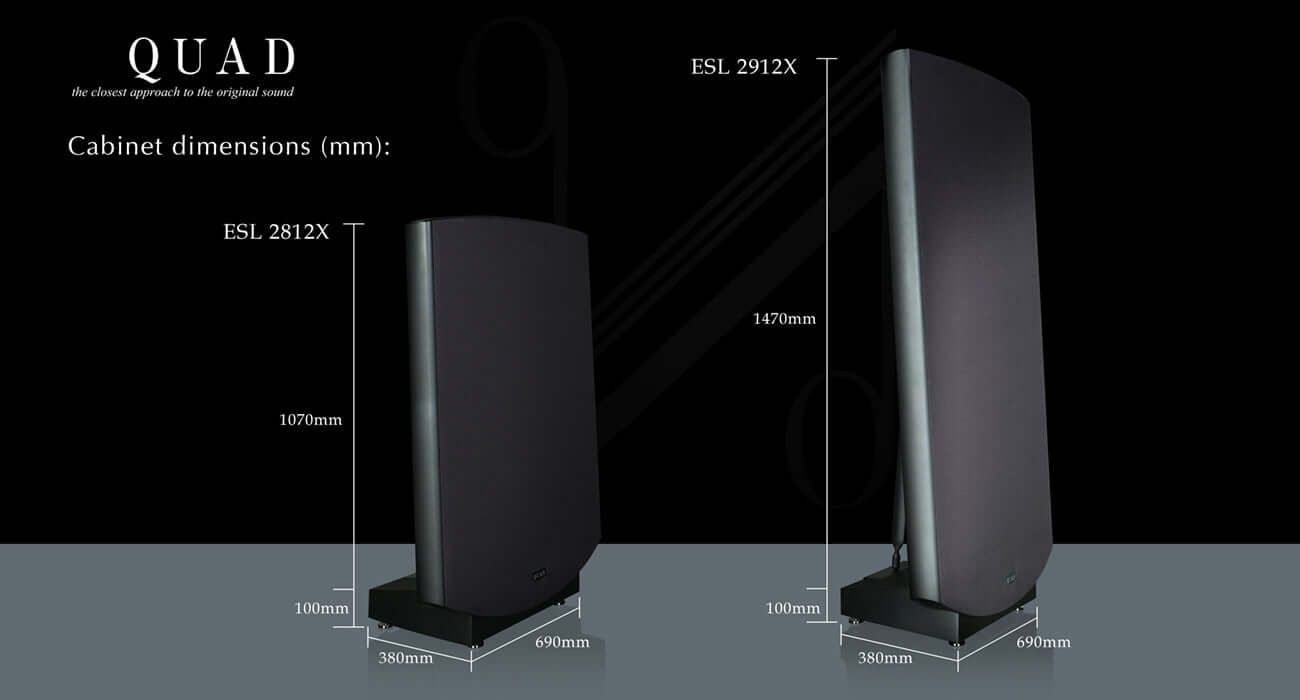
| ESL 2812X | ESL 2912X | |
| MSRP | $14,995 | $17,995 |
| Format | Floor standing dipole with 3° fixed tilt | Floor standing dipole with 3° fixed tilt |
| Type | Multiple electrostatic drive membranes | Multiple electrostatic drive membranes |
| Point Source Time Delay | Progressive concentric rings | Progressive concentric rings |
| Chassis Structure | Heavy duty composite aluminium / steel | Heavy duty composite aluminium / steel |
| Panel Elements | 4 | 6 |
| Maximum Output | 2 N / m2 at 2m on axis | 2 N / m2 at 2m on axis |
| Sensitivity | 1.5 mbar per volt referred to 1m (86dB/2.83V rms equivalent) | 1.5 mbar per volt referred to 1m (86dB/2.83V rms equivalent) |
| Nominal Impedance | 8 Ohms | 8 Ohms |
| Impedance Variation | 4 – 15 Ohms | 4 – 20 Ohms |
| Maximum Input | Continuous input voltage (rms): 10V Programme Peak for undistorted output: 40V Permitted peak input: 55 | Continuous input voltage (rms): 10V Programme Peak for undistorted output: 40V Permitted peak input: 55V |
| Frequency Response | 37Hz – 21kHz (-6dB) 33Hz – 23kHz (useable) | 32Hz – 21kHz (-6dB) 28Hz – 23kHz (useable) |
| Directivity Index | See Polar Diagrams | See Polar Diagrams |
| Distortion (100dB @ 1m) | Above 1000Hz <0.15% Above 100Hz <0.5% Above 50Hz <1.0% | Above 1000Hz <0.15% Above 100Hz <0.5% Above 50Hz <1.0% |
| AC Input | 220 – 240V, 100-120V | 220 – 240V, 100-120V |
| Power Fuse | 100mA anti-surge, 200 – 240V 200mA anti-surge, 100 – 120V | 100mA anti-surge, 200 – 240V 200mA anti-surge, 100 – 120V |
| Power Consumption | 8W | 8W |
| Dimensions (H x W x D) | 1070 x 690 x 380 (mm) 42.1 x 27.2 x 15 (inches) | 1470 x 690 x 380 (mm) 57.9 x 27.2 x 15 (inches) |
| Net Weight | 35 kg (77 lbs) | 44 kg (97 lbs) |

The Bottom Line
The ESL 2812X and 2912X represent a confident leap forward for Quad, reinforcing its dominance in the niche but revered world of electrostatic loudspeakers. With meaningful upgrades to transformer design, panel execution, and overall engineering integrity, these two models are more than cosmetic refreshes—they’re serious, performance-driven evolutions of the classic ESL formula.
At $14,995 and $17,995 (USD) per pair respectively, they’re not budget speakers, but neither are they out of line when compared to flagship electrostatics from MartinLogan or SoundLab. What they do differently—thanks to Quad’s unique concentric ring electrode design and fully overhauled electronics—is deliver a near-holographic midrange and transient performance that reminds you why this format still has a pulse in 2025.
The stealth finish, improved reliability, and real engineering effort put into the new transformers show a brand not just looking backward with nostalgia, but stepping forward with real purpose. That direction is even more interesting considering Quad’s broader moves—like the modernized Quad Artera series, and the upcoming Quad 3 Integrated Amplifier, 33 preamp, and 303 power amp, which revive classic model names with a fresh, 21st-century outlook.
In a market awash with DSP-driven convenience boxes and wireless “high-end” claims, the ESL X series doubles down on purist fidelity—reminding those who know (and care) that Quad still has one of the most distinctive voices in high-end audio.

Price & Availability
Of course, these kinds of improvements don’t come cheap. The ESL 2812X will set you back £10,999 / $14,995 / €13,999 / AU$25,000 per pair, while the ESL 2912X jumps to £12,999 / $17,995 / €16,999 / AU$27,500.
For more information: quad-hifi.co.uk
Related Reading:
- Quad 3 Integrated Amp Arrives Dressed Like It’s 1961, But Packs Modern Tech And That Classic Orange Glow
- Quad’s Iconic 303 Power Amplifier And 33 Pre-Amplifier Are Back: Preview
- WTF Is An Electrostatic Loudspeaker?
- Metaxas & Sins’ New Prinz Electrostatic Speakers Are About To Get A Serious Low End Boost From SVS


